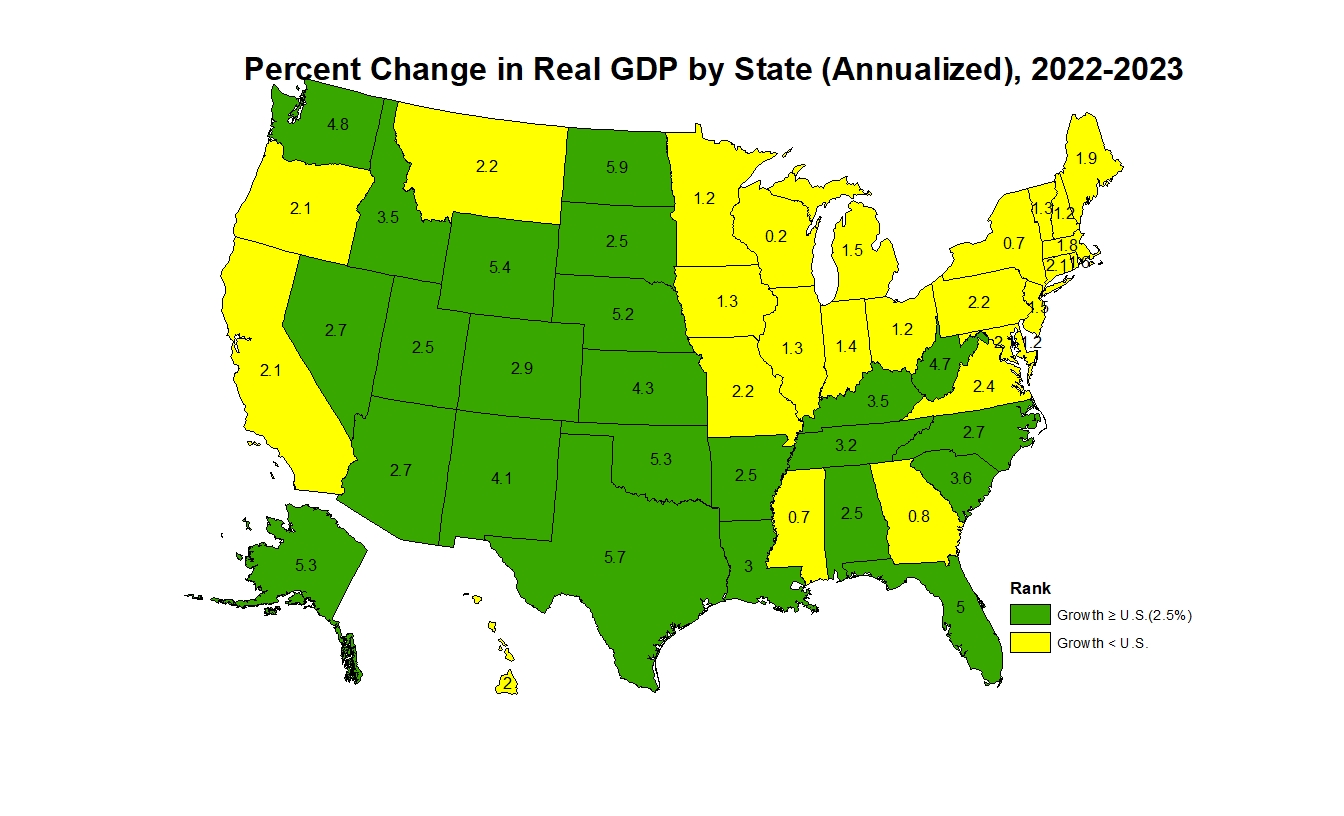Real gross domestic product (GDP) increased in 49 states and the District of Columbia in 2023 according to the U.S. Bureau of Economic Analysis (BEA). Delaware is the only state to report an economic contraction last year. The percent change in real GDP ranged from a 5.9 percent increase in North Dakota to a 1.2 percent decline in Delaware.
Nationwide, growth in real GDP (measured on a seasonally adjusted annual rate basis) increased 2.5 percent in 2023, which is stronger than the 2022 level of 1.9 percent. Retail trade; professional, scientific, and technical services; and health care and social assistance were the leading contributors to the increase in real GDP across the country.
Regionally, real GDP growth increased in all regions between 2022 and 2023. The percent change in real GDP ranged from a strong 5.1 percent increase in the Southwest region (Arizona, New Mexico, Oklahoma, and Texas) to a 1.2 percent increase in the Great Lakes region (Illinois, Indiana, Michigan, Ohio, and Wisconsin).

At the state level, seven states, including North Dakota, Texas, Wyoming, Alaska, Oklahoma, Nebraska, and Florida, posted real GDP increases of over 5.0 percent. On the other hand, the District of Columbia, Georgia, Mississippi, New York, and Wisconsin grew less than 1.0 percent in 2023 compared to 2022. Delaware posted a 1.2 percent annual decline in 2023. The mining industry was the leading contributor to growth in seven states including North Dakota, Texas, Wyoming, Alaska, and Oklahoma, the states with the first-, second-, third-, fourth-, and fifth-largest increases in real GDP, respectively. Retail trade increased in all 50 states and the District of Columbia. This industry was the leading contributor to growth in Florida which posted a 5.0 percent increase in real GDP. On the other hand, finance and insurance decreased in 43 states and the District of Columbia. The industry was the leading contributor to the decline in Delaware.


